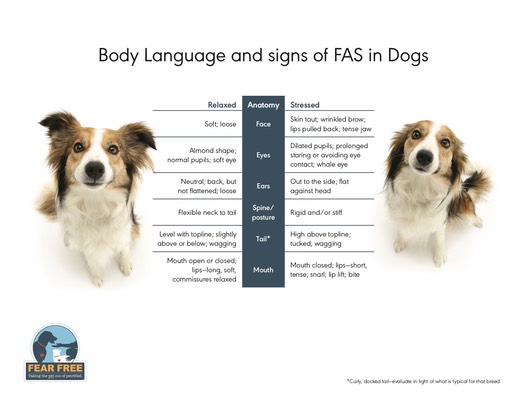
Fear is a powerful and visceral emotion. It alerts one to the presence of danger…real or perceived and serves the purpose of keeping one safe. Whether one is discussing humans, birds or dogs, fear is similar across almost all beings. Fear tends to have two stages, the more ubiquitous biochemical phase and the emotional phase characterized by highly individual responses. Fear is also the most common cause of aggression in dogs. Many seek to “train a dog out of fear” believing the more obedient the dog is, the less fearful he will be. This belief is misguided. Fear is an emotion not a behaviour. It is subject to classical conditioning rather than operant conditioning. More on that in a second.
I was recently perusing dog training articles when I came across this golden statement from Cesar Millan...
“To our dogs, affection is a reward. By comforting a fearful dog, you are rewarding what it’s doing in that moment: being scared. You cannot explain to a dog why it shouldn’t be scared, or tell the dog that the frightening thing won’t hurt it or is going away soon — they do not have the cognitive abilities to understand those concepts. What they do understand is, “I’m terrified and it’s getting me a reward. My humans wants me to do this.” (Cesar’s Way, 2017)
There is so much wrong with this statement. It begins with an incorrect assumption and uses that to guide the reader to an innacurate conclusion. In fact, it ignores most of what psychology tells us about addressing fear. Unfortunately, opinions like this are passed off as fact by people mistaken as professionals. These beliefs are used as rational to commit all kinds of pseudo behavior modification in order to attempt to address fearful issues. Usually all it does is mask the issue, potentially creates even larger problems and makes good owners feel guilty for doing what occurs naturally, comforting their distressed animal.
Lets consider this from a human’s point of view and use a concrete example.
You are walking home from the movies one night. You are enjoying yourself thinking what a great night you had. Suddenly you are approached by a stranger, mugged and beaten. You head home, tell a loved one what happened. The loved one calls the police, comforts you and gives you a hug. This is a very natural response from a loved one and serves to show both sympathy and solace to an aggreved family member.
Think about the above and answer a question…
Would you be more afraid of being mugged and beaten the following night because the loved one offered you that comfort?
Of course not.
Let’s take it further. If the loved one ignored your anguish, would you be less afraid? The answer to that is “no" and it would possibly make you loose a little respect for your loved one.
The same is true for dogs.
The fact is, it is almost impossible to reinforce fear. Fear is highly aversive, and if anything, it works in reverse. If you comforted often enough, you might create an association between the negative stimulus and the affection that could make your dog afraid of petting but even that would be a bit of a stretch. It is extremely unlikely to go the other way.
It is true that you can make your dog more afraid than he already is. You can accomplish this by doing something yourself that scares him or by forcing him into uncomfortable situations (flooding). There is even evidence that fear is an “ emotional contagion” meaning if an owner is feeling fear of a particular stimulus, the dog will also feel distress from the same stimulus (Yong and Ruffman, 2014). What will not happen is that your dog’s fear will increase if you comfort him. Fear cannot be reinforced.
So what is one to do?
Proper behavior modification almost always involves getting at the root cause of the issue. In this case, change the emotion and the behavior goes away. Punishment will not work. Ignoring the emotion will not be beneficial. Helping dogs to feel better about the things that bother them drive behaviors associated with those things in a different direction. Behavior is subject to operant conditioning, emotion to classical conditioning. One must engage in classical conditioning, counter conditioning and desensitization practices to affect emotion. Helping your dog to develop positive associations to negative stimuli by associating the negative stimuli with something positive and by working with their thresholds is the only way to help your dog alter their emotions. For example, if your dog reacts negatively to other dogs but really enjoys tennis balls, by presenting a tennis ball to your dog when he is in the company of other dogs and not in a hyper aroused state, your dog may start enjoying being in the company of other dogs and thus be less reactive. For more on threshold training, refer to “Using Thresholds”

I began this article introducing fear as having two phases, biochemical and emotional. During the biochemical phases physical reactions occur which can be more universal. Heart rate, adrenal, endorphin and cortisol levels can increase. The purpose of this phase is to prepare the dog for the “flight or fight” response. During the emotional phase, individual responses can vary. A dog’s reaction to the biochemical response personal. It is the reason why some dogs tend to be discribed as having solid even temperaments while others can be skittish or reactive to a given stimuli.
Using this conceptual framework, the pathway to addressing a fear based response is quite clear. You have to help your dog on one or possibly both levels depending on the severity of the fear response. To help reduce the biochemical response to a fear inducing stimulus, one could introduce medication, over the counter or prescription, always consulting with a trusted veterinarian while using classical and counterconditioning, consulting with a knowledgable behaviourist to encourage different desireable emotional states to the stimuli.
This process may take much time, effort and patience but the results tend to be longer lasting and avoids potential pitfalls of other more aversive techniques.